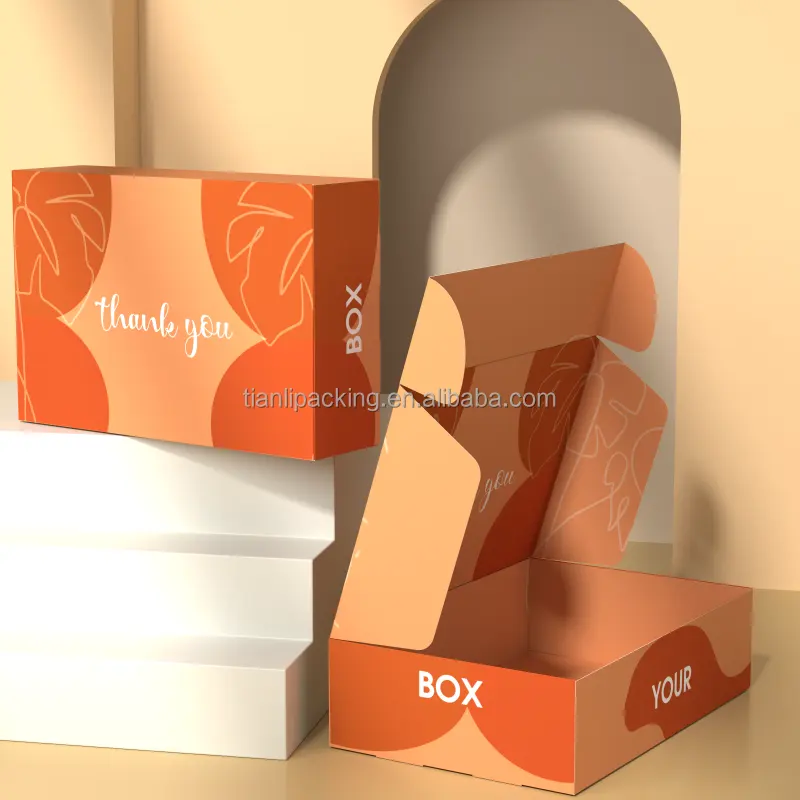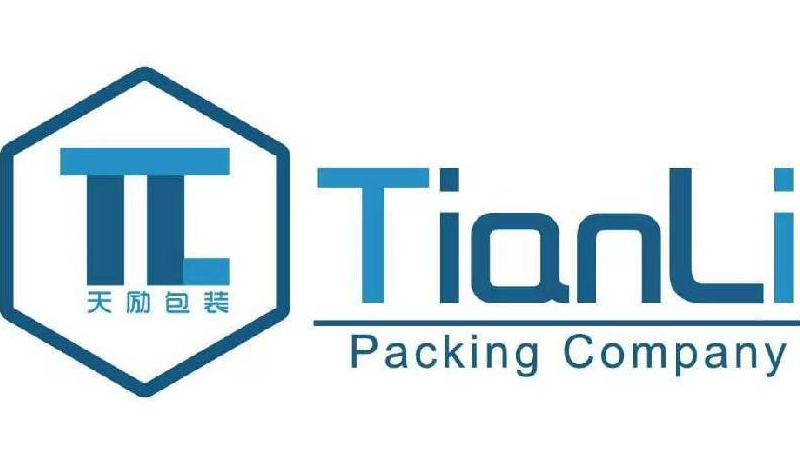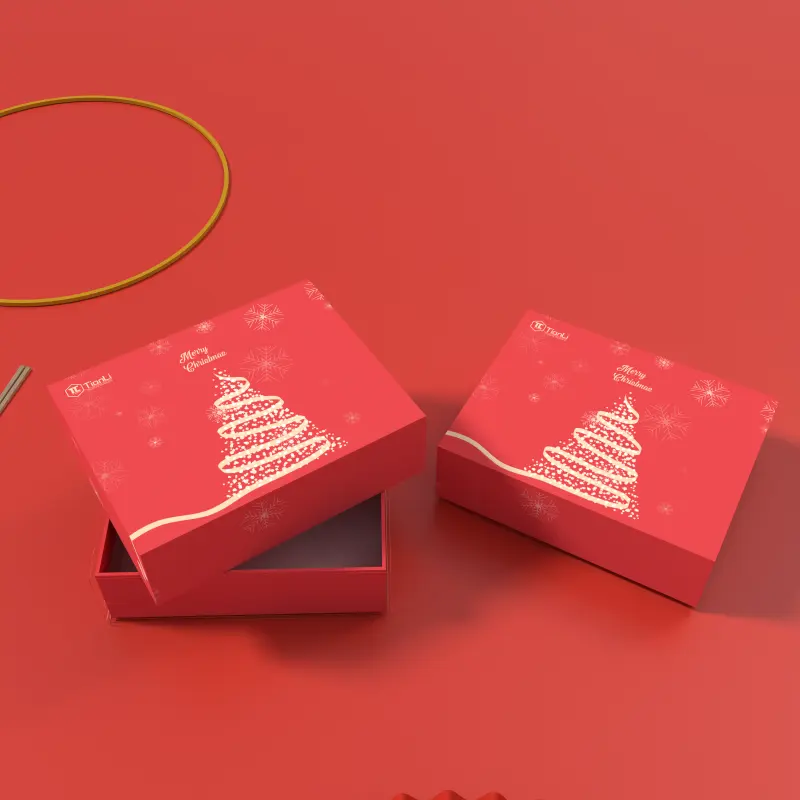অনুশীলিত গিফট বক্স ডিজাইনের মূল উপাদান
স্থায়িত্ব এবং রূপরেখা জন্য উপকরণ নির্বাচন
গিফট বক্সের কัส্টমাইজেশনে উপকরণের ভালো নির্বাচন অত্যাবশ্যক, কারণ এটি তার দৃষ্টিগোচর আবহাওয়া এবং দৈর্ঘ্যসম্পন্নতার উপর প্রভাব ফেলে। থ্রি গিফ বক্স উচ্চ গুণবত্তার উপকরণ ব্যবহার করে তৈরি হয় যা সময়ের পরীক্ষা অতিক্রম করতে পারে, এবং মহৎ কারিগরি সঙ্গে যুক্ত কিন্তু দৃঢ় এবং দীর্ঘকাল ব্যবহার যোগ্য, ক্ষতি হওয়া সহজ নয়। সাধারণত ব্যবহৃত উপকরণ, যেমন কার্ডবোর্ড বা পেপার বোর্ড, এদের টুটানোর অভাব এবং লম্বা ব্যবহারের কারণে পছন্দ করা হয়। সবজের বিকল্প, যেমন ক্রাফট পেপার, জনপ্রিয়তা বাড়ছে কারণ স্থায়ী পদ্ধতি ব্যবহারকারীদের ব্যবহার প্রভাবিত করছে, ২০২২ সালের গ্লোবাল গ্রীন প্যাকেজিং সার্ভে অনুযায়ী ৬৮%। উপকরণের নির্বাচন শিপিং খরচের উপর এবং গ্রাহকের অভিজ্ঞতার উপর সরাসরি প্রভাব ফেলে, কারণ ভারী উপকরণ বেশি খরচ নির্দেশ করতে পারে এবং ফলে একটি বেশি মূল্যের পণ্য।
ব্র্যান্ডিং প্রয়োজন: লোগো, রঙ এবং ফিনিশ
ব্র্যান্ডের উপাদানসমূহ যেমন লোগো, রঙ এবং ফিনিশ সংযুক্ত করা খুবই গুরুত্বপূর্ণ যা আদেশমাফিক উপহারের বক্সের জন্য একটি বিশেষ পরিচয় প্রদান করে। সফল ব্র্যান্ডিং একটি পণ্যকে তৎক্ষণাৎ চিনতে সাহায্য করতে পারে এবং ভোক্তা অংশগ্রহণে উৎসাহিত করে। রঙ মানসিক প্রতিক্রিয়া উত্থাপিত করতে পারে এবং এটি কিভাবে ভোক্তারা আপনার ব্র্যান্ডটি গ্রহণ করে তা নির্ধারণের একটি শক্তিশালী উপাদান; নীল রঙ সাধারণত বিশ্বাস এবং নিরাপত্তা উত্থাপিত করে এবং সবুজ পরিবেশ-বান্ধবতা প্রতিফলিত করে। এটি এমবোসিং, ডিবোসিং এবং ফয়েল-স্ট্যাম্পিং সহ বিভিন্ন ফিনিশিং অপশন সহ আসে যা কিছু অতিরিক্ত সৌন্দর্য যোগ করে। চ্যানেল এমন বড় ব্র্যান্ডগুলি এই ব্র্যান্ডিং পদ্ধতিগুলি ভালভাবে ব্যবহার করে, প্যাকেজিংটি সুন্দর এবং সুপ্রণালীভূত যা তাদের বিশেষ ছবি প্রতিফলিত করে।
আবিষ্কারশীল স্ট্রাকচারাল ডিজাইন বিবেচনা
কাস্টম গিফট বক্স ক্রিয়েটিভ স্ট্রাকচারাল ডিজাইন সহ পণ্য পরিবহনে সুরক্ষা করতে এবং অনপ্যাকিং অভিজ্ঞতা বাড়াতে অপরিহার্য। শক্তিশালী ডিজাইন আপনার স্ট্রাকচারকে কোনো ক্ষতি থেকে রক্ষা করে। মার্কিং দিয়ে কাট আকৃতি বা ইন্টিগ্রেটেড ক্লোজারস এতে ব্র্যান্ডিং করা হয়, এগুলো তাদের ব্যবহার এবং চূড়ান্ত ব্যবহারকারীর অভিজ্ঞতা যতটা ক্রিয়েটিভ। মডিউলার বা রিয়ูজেবল ডিজাইনগুলো খুবই জনপ্রিয়, বিশেষ করে ইকো-ফ্রেন্ডলি ভোক্তা যুগে। স্যুস্টেইনেবিলিটি সম্পর্কে অধ্যয়ন দেখায় যে এই ধরনের ইকো-ফ্রেন্ডলি প্যাকেজিং পরিবেশগত বোঝা খুব কম হতে পারে, যা সামাজিকভাবে দায়বদ্ধ ভোক্তা যুগে যৌক্তিক হয়।
এই গুরুত্বপূর্ণ ডিজাইন উপাদানের উপর ফোকাস দিয়ে, ব্যবসায়িক প্রতিষ্ঠানগুলি কার্যকরভাবে পণ্যদের সুরক্ষিত এবং উপস্থাপনা করতে পারে এবং ব্র্যান্ডের মূল্য এবং ভোক্তা যোগাযোগ বাড়াতে পারে।
আপনার প্রস্তুতকারকের সাথে সহযোগিতা করুন
বিশেষ ডিজাইনের ফলাফলের জন্য কার্যকর যোগাযোগ
স্পষ্ট চ্যানেল তৈরি করা আপনার প্রস্তুতকারকের সাথে নতুন এবং কার্যকর ডিজাইনের চাবি। এটি শুরু হয় অবিচ্ছিন্ন আপডেট এবং প্রশ্নের উপর দ্রুত প্রতিক্রিয়া দেওয়ার জন্য খোলা যোগাযোগের চ্যানেল স্থাপন করা থেকে। ৩D মকআপ এবং প্রোটোটাইপ সহ বিস্তারিত ডিজাইন গুরুত্বপূর্ণ। এই সম্পদগুলি মিথ্যা বোধ এড়ানোর জন্য এবং আনুগত্য নিশ্চিত করতে সকল পক্ষের মধ্যে যে সকল জড়িত আছে তাদের মধ্যে নির্দিষ্ট পণ্যের জন্য। একটি সাধারণ উদাহরণ হলো একজন ডিজাইনার যিনি একটি বিশেষ উপহার বক্স প্রকল্পে প্রস্তুতকারকের সাথে একসাথে কাজ করছেন। অনুপ্রেরণাহীন, সাধারণ বিষয়ে বিরোধী এবং নতুন এই প্যাকেজিং-এর প্রতি দিকে একইভাবে ব্র্যান্ডের বাকি অংশের মতো কাজ করার জন্য নির্দিষ্ট, তারা বরং বাণিজ্যিক ডিজাইন বিস্তারিত এবং গঠনমূলক প্রতিক্রিয়ার উপর ফোকাস করেছিলেন এবং ক্লায়েন্টদের সন্তুষ্ট করার এবং প্যাকেজিং-এর রূপরেখা এবং কার্যকারিতার সাথে মেলে এমন একটি ডিজাইন তৈরি করতে সক্ষম হয়েছিলেন। স্পষ্ট যোগাযোগ এবং নিয়মিত আপডেটের উপর ফোকাস দিয়ে, আমরা স্বচ্ছ যোগাযোগ এবং বিশেষ ডিজাইন রক্ষা করতে সক্ষম হয়েছি যখন বিশেষায়িত উপহার বক্স তৈরি করা হয়।
প্রোটোটাইপিং এবং পুনরাবৃত্তি প্রতিক্রিয়া প্রক্রিয়া
এটি হল মাস প্রোডাকশনে ঢুকার আগে প্রোটোটাইপ তৈরি এবং প্রাথমিক ফিডব্যাক নেওয়ার জন্য গুরুত্বপূর্ণ ধাপ। প্রোটোটাইপগুলি ডিজাইনের বাস্তব বাস্তবায়ন, যা বাস্তব পরিবেশে টেস্ট এবং ফিডব্যাক সংগ্রহের অনুমতি দেয়। এটি স্টেকহোল্ডারদের ইনপুটকে উত্সাহিত করে, যা বাস্তব ব্যবহারকারী ইন্টারঅ্যাকশন দ্বারা চালিত, যাতে উচ্চতরভাবে সুন্দর এবং উন্নত ডিজাইন তৈরি করা যায়। ফিডব্যাকের পুনরাবৃত্তি মেকানিজম শুরুর ধাপে এমন সমস্যাগুলি ধরতে এবং সমাধান করতে সাহায্য করে যাতে ডিজাইনের গুণগত মান এবং ফাংশনালিটি উন্নত হয়। CAD সফটওয়্যারের মতো যন্ত্রপাতির সাহায্যে দ্রুত প্রোটোটাইপিং আরও দ্রুত করা যেতে পারে। অধ্যয়ন নির্দেশ করে যে এই পদ্ধতি ব্যবহারকারী ব্যবসাগুলি x 30% বেশি কার্যকর হতে পারে। সুতরাং, এই ধরনের প্রোটোটাইপ শুধুমাত্র ডিজাইনের উন্নয়নে সাহায্য করে না, বরং শুরুর পণ্যটি কনসামার প্রয়োজন এবং বাজারের দাবি মেটায় কিনা তা নিশ্চিত করতে পারে।
উৎপাদন সময়সূচী পরিচালনা
মার্কেটিং ক্যাম্পেইনের সাথে ডেডলাইন মিলিয়ে নেওয়া
প্রোডাকশন স্কেজুলকে পরিকল্পিত মার্কেটিং অভিযানের সাথে একত্রিত রাখা পণ্যের প্রভাব এবং বিক্রি সর্বোচ্চ করতে জরুরি। যখন আপনি বিক্রির সাথে প্রোডাকশনকে মিলিয়ে দেন, তখন পণ্যগুলি সময়মতো স্থানান্তর করা হয় এবং এটি একটি একত্রিত মার্কেট স্ট্র্যাটেজির উদ্দেশ্যে পণ্যের উপস্থাপন উৎসাহিত করে। প্রোডাকশন সময় ঠিকঠাকভাবে হিসাব করতে সামগ্রীর উপলব্ধিতা, উৎপাদন ক্ষমতা এবং অপ্রত্যাশিত দেরি এমন চলতি ভেরিয়েবলগুলি গণ্য করা জরুরি। উদাহরণস্বরূপ, SaaS কোম্পানিগুলি তাদের টাইমলাইন এতটাই ভালোভাবে সাজাতে পারে যে তারা শুধু একটি পণ্য মুক্তি দেয় না, বরং একটি অভিযানের সাথে এটি করে। একটি বিচারশীল পণ্য লaunch পর্যালোচনা কার্যকর সময় ব্যবস্থাপনার ফায়দাগুলি বিস্তারিত বর্ণনা করে, যাতে বিক্রির বৃদ্ধি এবং শক্তিশালী ব্র্যান্ড উপস্থিতি অন্তর্ভুক্ত থাকে।
সময়সূচি প্রভাবিত করন্তু ফ্যাক্টর
অনেক ফ্যাক্টর থাকতে পারে যা লিডটাইমের উপর প্রভাব ফেলতে পারে, যেমন সাপ্লাইয়ারদের দেরি, ডিজাইনের জটিলতা এবং উৎপাদন ক্ষমতা। এই চলতি পরিবর্তনশীল বিষয়গুলির নিগম্ভ হওয়া জরুরি যাতে তাদের নেতিবাচক প্রভাব কমানো যায়। প্যাকেজিং শিল্পের তথ্য এবং সংখ্যাঙ্ক: প্যাকেজিং শিল্পের গড় চক্র সময় গাড়ি শিল্পের মতোই এবং তা প্রক্রিয়াধীন হওয়া উপকরণ এবং লট সাইজের উপর নির্ভর করে। উদাহরণস্বরূপ, স্থানীয় প্যাক-আউট বা একাধিক উৎস থাকলে দেরি কমানো যেতে পারে। শুরু থেকেই সহজ ডিজাইনে ফোকাস করা উত্পাদনকে নির্দেশনা দেওয়ার জন্য উপযোগী হতে পারে। ব্যবসায়িক প্রতিষ্ঠানগুলি এই ফ্যাক্টরগুলি বিশ্লেষণ করে তাদের উৎপাদন স্কেজুল সর্বোচ্চ করতে পারে এবং প্রতিদ্বন্দ্বীদের কাছে পিছিয়ে না যায়।
একক অর্ডারের জন্য নির্দিষ্ট গুণবত্তা নিশ্চিত করার জন্য র্যাক্টিভ পদক্ষেপ
শিল্পীদের কাজের মান নষ্ট না করে উৎপাদন বৃদ্ধি
আর্টিজান অনুভূতি রেখে আয়াত বাড়ানো হল অনেক প্রস্তুতকারকের জন্য একটি সমস্যাময় বিষয়। বড় পরিমাণে, এটি অটোমেশন এবং দক্ষ শ্রমের মধ্যে সাম্য রক্ষা করা দরকার। অনেক কোম্পানি মানদণ্ডের সাধারণ লক্ষ্য তৈরি করেছে এবং সतত উন্নতির প্রক্রিয়ায় আছে যাতে প্রিমিয়াম কাজের দক্ষতা নষ্ট না হয়। হলমার্ক সহ মূল শিল্প খেলোয়াড়রা এই পদ্ধতিগুলি ব্র্যান্ড নিয়ন্ত্রণের জন্য ব্যবহার করেছে যখন স্কেলিং করছে। অটোমেশন যখন আর্টিজান বিশেষজ্ঞতার সাথে সংযুক্ত হয়, তখন খাবার এবং পানীয়ের উৎপাদনকে এমন একটি স্তরে বাড়িয়ে তোলা যায় যা একটি কোম্পানির এবং গ্রাহকদের উচ্চ মানের প্রত্যাশাকে পূরণ করে।
বড় স্কেলের জন্য মান নিয়ন্ত্রণ পদক্ষেপ
এটি একটি ভালো QC প্রক্রিয়ার প্রয়োজন হয় বড় উৎপাদন রানে সমতা নিশ্চিত করতে। এটি উত্পাদন প্রক্রিয়ার আগে, পরে এবং মধ্যে সख্ত নিয়ন্ত্রণ বাস্তবায়ন অন্তর্ভুক্ত করে। এখানে তৃতীয় পক্ষের পরিদর্শন সেবা বা আন্তর্নিহিত গুণবত্তা নিশ্চয়করণ দলগুলি বিশেষভাবে সহায়ক হতে পারে। এই দলগুলি জমা লাইনের ভারী অংশগুলি পরিচালনা করে, উত্পাদিত পণ্য নির্দিষ্ট গুণবত্তা মান অনুসরণ করে কিনা তা নিশ্চিত করে। এই সতর্কতা নেওয়ার ফেলে থাকা ব্যাপক দায়বদ্ধতা সৃষ্টি করবে ফ্লপ এবং প্রত্যাবর্তনের মাধ্যমে। শিল্প ডেটা নির্দেশ করে যে খারাপ গুণবত্তা নিয়ন্ত্রণ দোষ সৃষ্টি করতে পারে যা কোম্পানিগুলিকে ভারী আর্থিক ক্ষতি ভোগ করতে হয় এবং তাদের প্রতिष্ঠা ধ্বংস করতে পারে, তাই এটি আমাদের ব্যাঘাতের জন্য গুরুত্বপূর্ণ হচ্ছে এই পদক্ষেপগুলি আমাদের ব্যাগ অর্ডার অধিগ্রহণের জন্য কৌশলে গুরুত্ব দেওয়া।

চারু প্যাকেজিং ট্রেন্ডে সামনে থাকা
একটি নতুন উদ্ভিদ বিশিষ্ট উপকরণের ট্রেন্ড
অর্ডার করা গিফট বক্স প্যাকেজিং শিল্প নতুন স্থিতিশীল উপাদানসমূহের সাথে দ্রুত পরিবর্তিত হচ্ছে। জৈববিদ্যৈক্যযোগ্য প্যাকেজিং পিন, সাগরের শৈবাল এবং গ্লাসাইন অগ্রণী হিসেবে চলছে: এখানে এই সবজি ঝুঁকির সর্বশেষ খবর। এই সবজি বিকল্পগুলি শুধু পরিবেশের উপর কম প্রভাব ফেলে না, তা স্থিতিশীল উৎপাদনের জন্য ভোক্তা স্বাদের সাথেও মেলে। পরিবেশ গোষ্ঠীর সাম্প্রতিক খবর এখন সেই ঝুঁকি ব্যাখ্যা করে, বলে যে কম কার্বন পদচিহ্নযুক্ত প্যাকেজিং-এর জন্য চাহিদা বেড়েছে। এই স্থিতিশীল প্যাকেজিং পরিবর্তন শুধু একটি ঝুঁকি নয়, এটি দ্রুত ব্র্যান্ডগুলির জন্য একটি দিকনির্দেশনা হয়ে উঠেছে যেখানে দায়িত্বপূর্ণ ব্র্যান্ডিং ছবি তৈরি করতে এবং একটি বাজারের আকর্ষণ বढ়াতে হবে যা দিন দিন বেশি পরিবেশ সচেতন হচ্ছে।
এবং পুনর্ব্যবহারযোগ্য এবং কমপোস্টেবল উপকরণের ব্যবহার বৃদ্ধি পাচ্ছে। অপচয় কমানোর জন্য উৎসর্গীকৃত কার্ডবোর্ড এবং কাগজ, এবং জৈবভাবে বিঘ্ননশীল প্লাস্টিকের ব্যবহার করা হয়। স্থিতিশীল প্যাকেজিং-এর দিকে যাওয়াও গ্রাহক আচরণের বড় বিকাশের অংশ। আজকের গ্রাহকরা যে পদচিহ্ন তারা ফেলে তা সম্পর্কে খুবই সচেতন এবং যে ব্র্যান্ডগুলো এটা করে তাদের প্রতি বিশ্বস্ততা বেশি হতে পারে। ২০২১ সালের একটি পরিবেশ সুরক্ষা এজেন্সির সর্বেক্ষণ দেখায় যে ৬৭% গ্রাহক বলেছেন যে স্থিতিশীলতা তাদের ক্রয় সিদ্ধান্তের একটি গুরুত্বপূর্ণ উপাদান। এই তথ্য দেখায় যে একটি কোম্পানি যদি সবুজ প্যাকেজিং বাস্তবায়নে ফোকাস করে তবে তা দৃঢ় গ্রাহক সম্পর্ক গড়ে তুলতে পারে।
প্রযুক্তি ব্যবহার করে নির্দিষ্ট ব্যক্তিগত স্বাভাবিকতা
নতুন প্রযুক্তি আরও সঠিক এবং গুণমানমূলক স্বাদশ উপহারের বক্স তৈরি করে। এই মুদ্রণ পদ্ধতিতে ব্যবহৃত প্রযুক্তি অত্যন্ত মনোহর এবং এটি বিভিন্ন উপাদানের অত্যন্ত সঠিক কাটা অনুমতি দেয়, যা চমৎকার প্যাকেজিং এবং উপহারের বক্স প্রদান করে! ডিজিটাল মুদ্রণ এবং ব্যক্তিগত ডাই-কাট টুল ব্যবহার করে, ব্র্যান্ডগুলি জটিল, ব্যক্তিগত ডিজাইন তৈরি করতে পারে যা আগে সম্ভব ছিল না। এই প্রযুক্তিগুলি উচ্চ রেজোলিউশনের গ্রাফিক, জটিল আকৃতি এবং জীবন্ত রঙের ব্যবহার অনুমতি দেয়, যা প্যাকেজিং-এর আভিজাত্য এবং বিশেষ পরিচয় যোগ করে। Packlane এবং Packhelp এমন দুটি ব্যবসা যা এই বিষয়টি প্রমাণ করেছে - উভয়ই এই ক্ষমতাগুলি ব্যবহার করে সত্যিকারের প্রতিদ্বন্দ্বিতা বাড়ানোর সমাধান তৈরি করেছে, যা অত্যন্ত ব্যক্তিগত, দৃশ্যমানভাবে আকর্ষণীয় এবং শুধু মজার।
এবং, বটে, ডেটা এনালিটিক্স ব্যবহার করে জানার জন্য যা গ্রাহকরা আসলেই চায়, এটি হল সহজ ফল। গ্রাহকদের ডেটা ব্যবহার করে ব্র্যান্ডগুলি তাদের গ্রাহকদের ইচ্ছের সাথে মেলানোর জন্য প্যাকেজিং-এর উপর আরও ভালোভাবে চিন্তা করতে পারে এবং বেশি অংশগ্রহণ এবং সন্তুষ্টি তৈরি করতে পারে। ডেটা উপর ভিত্তি করে এই পদক্ষেপ নিশ্চিত করে যে, কোম্পানিগুলি চটপটে এবং বাজারের ট্রেন্ডে প্রতিক্রিয়া দেওয়ার জন্য সক্ষম এবং ডিজাইনে কার্যকর এবং দ্রুত ভাবে ইটারেট করতে পারে। এভাবে, এই কোম্পানিগুলি শুধুমাত্র আজকের গ্রাহককে সন্তুষ্ট করে, কিন্তু ভবিষ্যতের জন্যও পূর্বাভাস করে, এভাবে প্যাকেজিং ডিজাইনের ক্ষেত্রে নতুন আবিষ্কারের পথ দেখায়।
সাধারণ জিজ্ঞাসা
কাস্টম গিফট বক্স ডিজাইনে বিবেচনা করা উচিত সবচেয়ে গুরুত্বপূর্ণ দিকগুলি কী?
গুরুত্বপূর্ণ দিকগুলির মধ্যে রয়েছে উপাদান নির্বাচন, ব্র্যান্ডিং উপাদান, উদ্ভাবনশীল গঠন, স্থিতিশীলতা এবং সঠিকতার জন্য প্রযুক্তির উন্নয়নের ব্যবহার।
গিফট বক্স কাস্টমাইজেশনে উপাদান নির্বাচন কেন গুরুত্বপূর্ণ?
সঠিক মাতেরিয়াল দৈমিকতা, রূপরেখা আকর্ষণ এবং খরচের উপর প্রভাব ফেলে। পরিবেশ-বন্ধু অপশনগুলি বিশেষ ভাবে জনপ্রিয়।
কিভাবে ব্যবসায় স্বার্থে কัส্টম গিফট বক্সে কার্যকর ব্র্যান্ডিং নিশ্চিত করা যায়?
লোগো, রঙ এবং ফিনিশ এমন ব্র্যান্ড উপাদান যুক্ত করে ব্যবসায় একটি বিশেষ পরিচয় তৈরি করতে পারে এবং নির্দিষ্ট গ্রাহকের ভাবনা এবং আচরণ উদ্দীপিত করতে পারে।
কীভাবে প্রযুক্তি কাস্টম গিফট বক্স ডিজাইনকে উন্নত করতে পারে?
ডিজিটাল প্রিন্টিং এবং ডেটা এনালিটিক্সের মতো প্রযুক্তি দ্বারা নির্দিষ্ট কাস্টমাইজেশন সম্ভব হয়, যা বিশেষ এবং আকর্ষণীয় প্যাকেজিং তৈরি করে।

